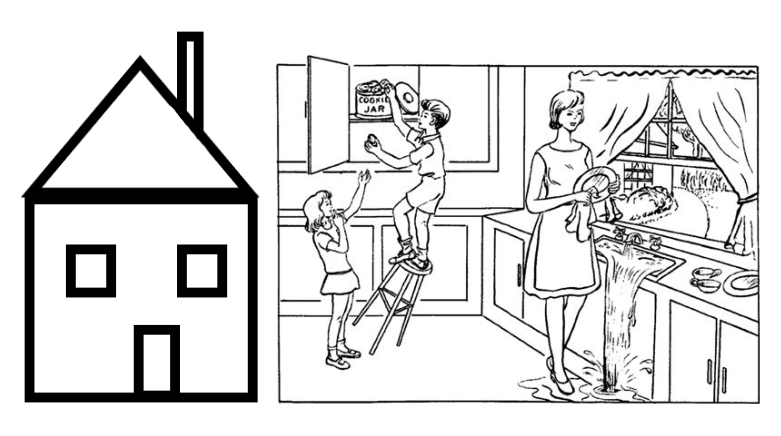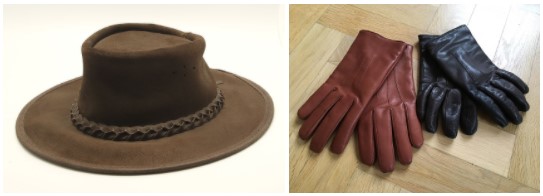Agnosia
Episode #4 of the course Introduction to clinical neuropsychology by Alicia Nortje
Welcome back! Today’s topic is “agnosia”. We’ll define “agnosia”, learn about different types of agnosia, and discuss the clinical presentation. Finally, we’ll learn about a famous example of agnosia.
Definition of Agnosia
Agnosia refers to a condition where patients are unable to recognize or identify items that should be familiar to them. Like “amnesia”, the term “agnosia” comes from the Greek: “a” means “without”, “gnosis” means “knowledge”, and “ia” means “a condition”.
Patients with agnosia are “without knowledge” of familiar items, and cannot recognize common everyday items, like forks and spoons, or people who they are familiar with, like their partners or their parents.
Agnosia cannot be explained by other factors, for example, amnesia, impaired sensory systems (e.g., being blind), or impaired language abilities. Therefore, people with agnosia can describe a toothbrush, show how to use an imaginary toothbrush, but they are unable to “recognize” a toothbrush!
Types of Agnosia
There is a classical distinction between apperceptive and associative agnosia:
• Patients with associative agnosia might not be able to name everyday items and shapes, but they can copy, draw, or match them. They can’t name a triangle, but can point one out! Therefore, their perception of visual items is intact, but the “associations” between the item perceived visually and the identity and the name for that item is impaired. These patients cannot access the meaning of these items they perceive.
• In contrast, patients with apperceptive agnosia have lost the ability to perceive and differentiate between everyday items. If you showed them a bunch of shapes, they would not be able to differentiate between them.
Patients can experience agnosias for three sensory systems:
• the visual system (i.e., they don’t recognize items that they see)
• the auditory system (i.e., they don’t recognize items that they hear)
• the tactile systems (i.e., they don’t recognize items that they feel)
Visual Agnosias
So far, you’ve learned a bit about agnosia for the visual system—apperceptive and associative agnosias. Associative agnosia is also known as visual object agnosia. Apperceptive and associative visual object agnosia results from damage to the occipital lobes. Other types of agnosias that affect the visual system include prosopagnosia and simultagnosia.
Prosopagnosics cannot recognize people who they know well, for example, family and friends. They can see faces, and can judge the age and gender of the faces, but can’t recognize them. Some evidence exists that auditory information can help with recognition (e.g., hearing their voice) or seeing a distinctive cue (e.g., hairstyle, or clothing). Prosopagnosia is associated with impaired functioning of the fusiform face area (a specialized brain region), and areas in the occipital and parietal lobes.
People with simultagnosia are unable to see more than an image at a time. In extreme variations, patients can see and describe the multiple shapes and lines, but can’t comprehend the “bigger” picture. With dorsal simultagnosia, patients can describe the squares but they don’t see that these form a house. In ventral agnosia, when looking at “complex” scenes like the kitchen picture, patients are only able to describe one aspect of the picture (e.g., the water running over the sink), but they don’t perceive the other scenes of the picture. Dorsal agnosia results from damage to the parietal and occipital lobes, whereas ventral agnosia results from damage to where the occipital and temporal lobes join.

Famous Example of Agnosia
A well-known example of prosopagnosia is described by Oliver Sacks in the book The Man Who Mistook His Wife for a Hat. Oliver describes a patient, Dr. P., who was unable to recognize faces, but also displayed other strange behavior such as mistaking inanimate objects (e.g., trees) for real people. At one stage, Sacks describes how Dr. P. was looking for his hat and mistook his wife’s head for one!
Dr. P. also displayed symptoms of visual object agnosia: he was unable to name items presented to him, and when Oliver Sacks passes a glove to him and asks him to identify it, Sacks writes (I have summarised the passage):
“A continuous surface … infolded on itself. It appears to have … five outpouchings, if this is the word… [it is] … A container of some sort? … It could be a change-purse, for example, for coins of five sizes.”
It should be emphasized that Dr. P. did not have any vision problems (his eyes were fine), but was unable to assign meaning to what he saw.
Conclusion
Today we learned about agnosias, and how despite the normal functioning of the sensory system, patients are unable to make sense of what they are seeing/hearing/touching. Tomorrow, we’ll learn about aphasia.
Cheers,
Alicia
Recommended videos
Video of someone with prosopagnosia
Video of someone with visual object agnosia
Recommended book
The Man Who Mistook His Wife for a Hat by Oliver Sacks
Share with friends




